Human-induced M5.3 earthquake, series of aftershocks hit western Texas, U.S.
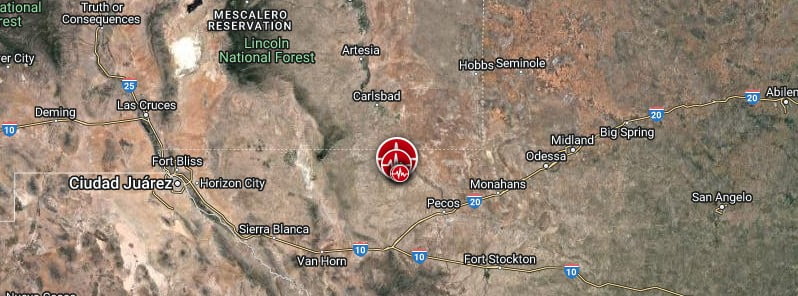
A shallow earthquake, registered by the USGS as M5.3, hit western Texas at 21:32 UTC on November 16, 2022. The agency is reporting a depth of 8.3 km (5.1 miles). The quake was followed by a series of aftershocks, with magnitudes ranging from 2.6 to 4.1.
The epicenter was located 39.2 km (24.3 miles) WSW of Mentone (population 19), Texas, and 90 km (56 miles) SSE of Carlsbad (population 28 957), New Mexico.
According to the USGS PAGER, 397 000 people are estimated to have felt light shaking.
A Green alert was issued for shaking-related fatalities and economic losses. There is a low likelihood of casualties and damage.
Overall, the population in this region resides in structures that are resistant to earthquake shaking, though vulnerable structures exist. The predominant vulnerable building types are unreinforced brick masonry and reinforced masonry construction.
Light damage was reported in the region.
The largest known earthquake to hit Texas was M6.0 in the town of Valentine, near Marfa, in 1931.
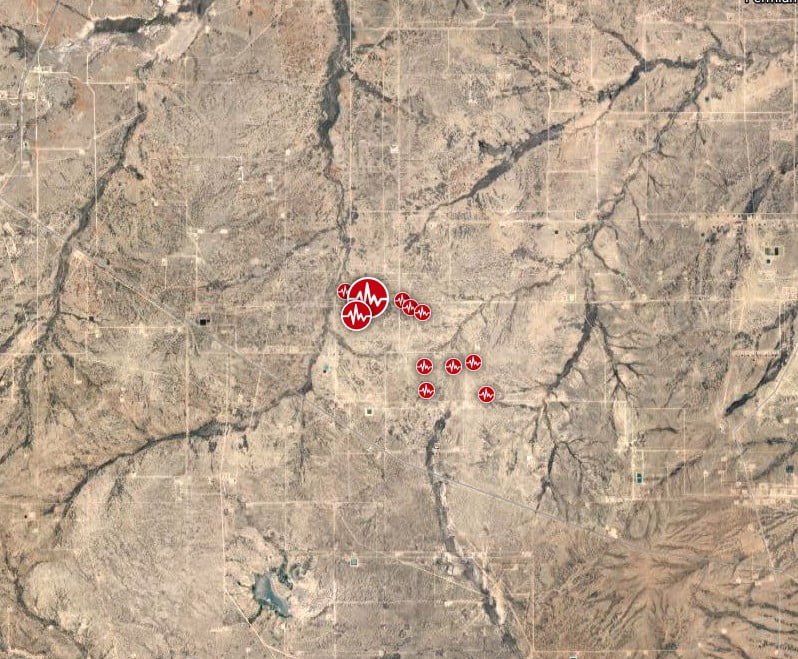
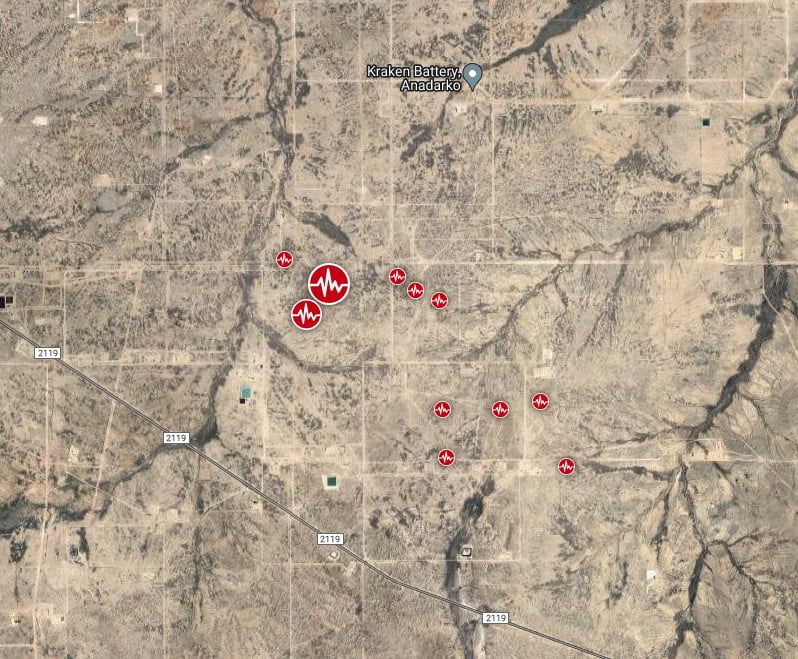
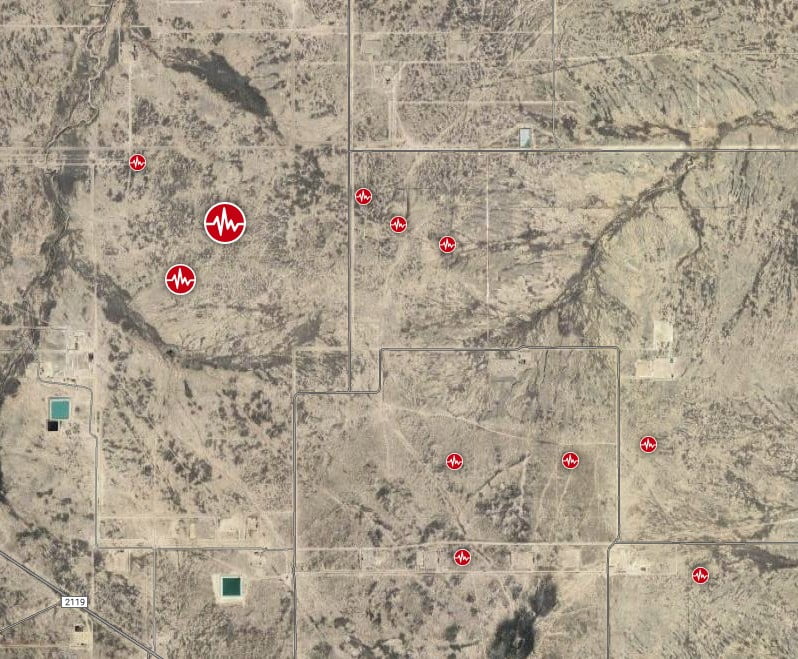
The quake occurred in the same area where a human-induced M5.0 earthquake hit on March 26, 2022. This was the third-largest earthquake recorded in Texas and the largest earthquake in the Central and Eastern United States since the three M5.0 – 5.8 induced events in Oklahoma in 2016.
“Using multistation waveform template matching, we detect 3 940 earthquakes in the sequence with the first event in the area occurring in May 2018… We find that the sequence was most likely induced by nearby wastewater disposal operations, and seismicity rates in the region surrounding the M5.0 will likely continue to increase in the future if disposal operations continue unaltered.”1
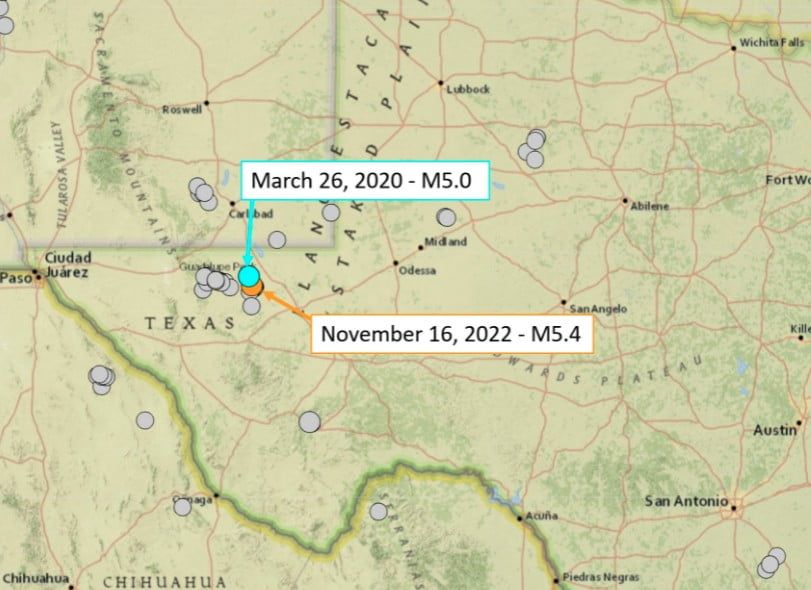
“This area of western Texas was historically very quiet, but has had 375 M≥3 quakes beginning in 2019,” said Dr. Lucy Jones — one of the world’s most recognizable seismologists.2
“This is the type of pattern that suggests the quakes are induced by pumping fluids into the ground. This is not too big to be induced.”
Jones was a USGS seismologist for 33 years.
Induced seismicity
As is the case elsewhere in the world, there is evidence that some central and eastern North America earthquakes have been triggered or caused by human activities that have altered the stress conditions in the earth’s crust sufficiently to induce faulting.3
Activities that have induced felt earthquakes in some geologic environments have included the impoundment of water behind dams, injection of fluid into the earth’s crust, extraction of fluid or gas, and removal of rock in mining or quarrying operations.
In much of eastern and central North America, the number of earthquakes suspected of having been induced is much smaller than the number of natural earthquakes, but in some regions, such as the south-central states of the U.S., a significant majority of recent earthquakes are thought by many seismologists to have been human-induced.
Even within areas with many human-induced earthquakes, however, the activity that seems to induce seismicity at one location may be taking place at many other locations without inducing felt earthquakes.
In addition, regions with frequent induced earthquakes may also be subject to damaging earthquakes that would have occurred independently of human activity.
Making a strong scientific case for a causative link between a particular human activity and a particular sequence of earthquakes typically involves special studies devoted specifically to the question.
Such investigations usually address the process by which the suspected triggering activity might have significantly altered stresses in the bedrock at the earthquake source, and they commonly address the ways in which the characteristics of the suspected human-triggered earthquakes differ from the characteristics of natural earthquakes in the region.
References:
1 The induced Mw 5.0 March 2020 west Texas seismic sequence – USGS – December 4, 2020
2 From a Twitter post published by Dr. Lucy Jones on November 16, 2022
3 M5.3 earthquake – 39 km WSW of Mentone, Texas – USGS – November 16, 2022
Featured image credit: TW/SAM, Google

Commenting rules and guidelines
We value the thoughts and opinions of our readers and welcome healthy discussions on our website. In order to maintain a respectful and positive community, we ask that all commenters follow these rules.